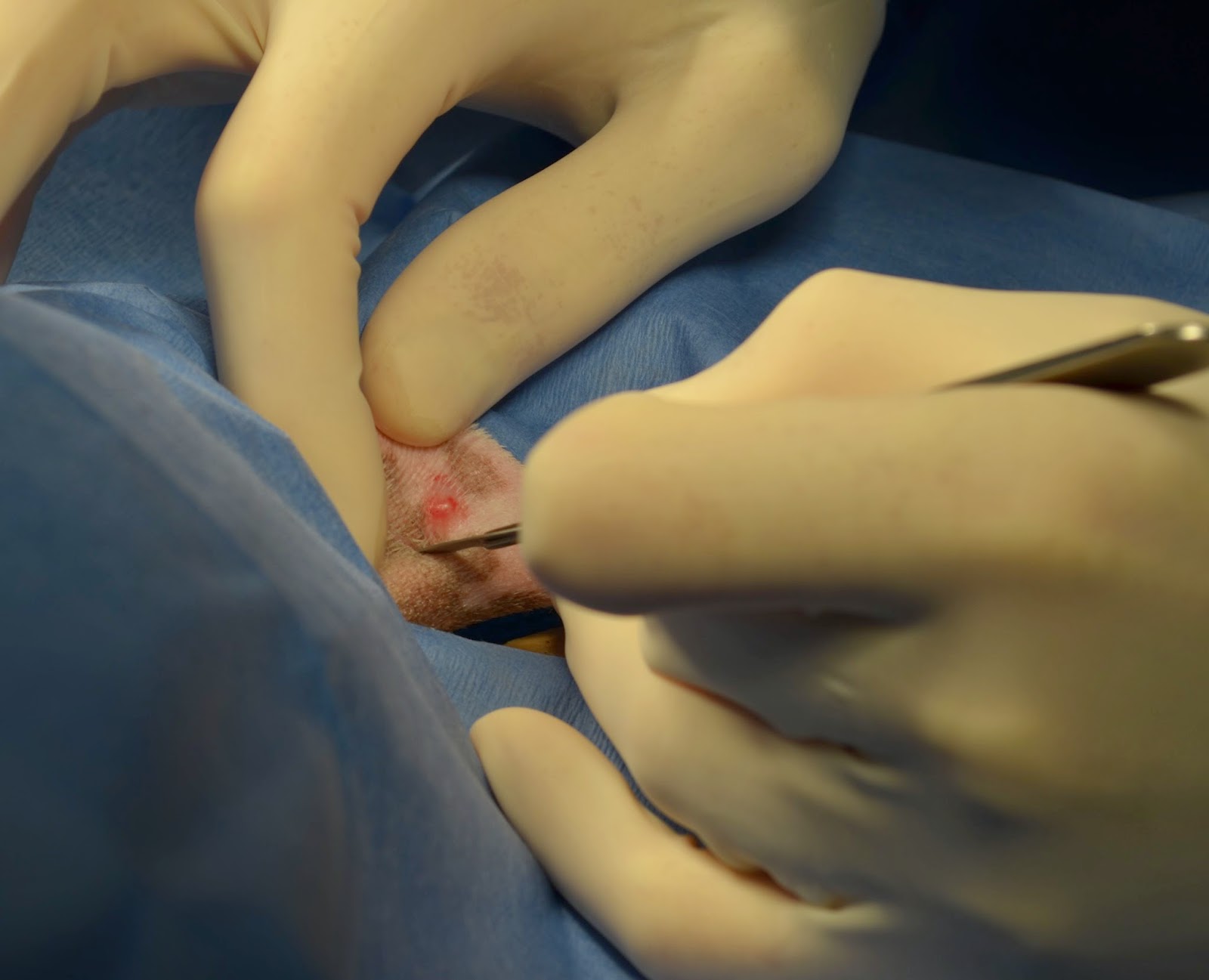The inhaled anesthesia is turned off so that pure oxygen is given for a few minutes. The monitoring probes and clamps are removed while an assistant prepares the cage with a heating pad and dry bedding. The oxygen is stopped, the endotracheal tube is disconnected, untied, and the balloon deflated. Since dental cleanings are wet affairs, the head is dried with towels or a hair dryer.
Your pet is carefully carried over to the cage and placed on the heating pad covered with bedding - usually towels or synthetic lambswool.
 |
| Heidi's recovery cage. |
The endotracheal tube is not removed until your pet is awake enough to swallow on their own. The risk of removing the trach tube too soon is that the animal will aspirate (inhale) fluid into their lungs. Fluid in lungs = bad news. An assistant or LVT will watch constantly to monitor the pet's ability to swallow. Once the animal is conscious enough to swallow on their own, the trach tube can be removed. This is why Heidi's tongue in the picture above is pulled out the side of her mouth; when she swallows, her tongue with curl up. After a few good swallows, the tube is pulled. Then, time takes over. A nap and some quiet observation of their surroundings lead to full consciousness and bodily control.
 |
| Heidi has been extubated (endotracheal tube removed). Perfect time for a good, cozy nap. |
After your pet has recovered from anesthesia and is comfortably accommodated at home, you may notice a lack of energy and propensity to sleep for the rest of the day and probably the next day too! This is normal. When Heidi came home, she could hardly keep her eyes open. She and the other dogs slept the rest of the day and almost all of the next day. Usually, your veterinarian will send you home with some home-care instructions. There may be medications to be given at home, recommendation to feed soft or canned food for a specified period of time, and/or leash walks for a specified period of time.
 |
| Heidi can hardly keep her eyes open. |
 |
| Cuddled under the quilt, she can hardly keep her head up. |
Since Heidi had tumors removed from her back legs, she had to visit the vet's office to have her sutures removed after 10-14 days. Because her teeth were cleaned, Heidi had a few days of canned food since her gums can be sensitive afterwards.
The saga is over - for now!
While dental cleanings can cost a great deal, they are a sure-fire way to maintain and improve the health of your pet. You may even notice afterwards that they act like a much younger self.
Animals are very good at hiding pain so you may not even know that anything was bothering them until they get their teeth cleaned!










